My research interest lies at the intersection of water and energy. Primarily, I strive to answer the following questions through my research:
- How can (waste)water sector transition away from traditionally energy-intensive processes? How can resource recovery and decarbonization be realized along this route?
- How can we better assess and compare technical potential through a combination of mechanistic modeling, geospatial information, techno-economical analysis, and life-cycle assessment?
- How will the emerging technologies outside environmental field affect us environmental-engineers? More specifically, how will the artificial intelligience era affect our living environment, and how can we benefit from AI development?
Major research tool I use:
Electrochemistry, Microbial Electrochemistry, Geospatial Information System, Techno-economic Analysis, Lifecycle Assessment
For a complete list of publications, please see my Google Scholar. For research-related question, don’t hesitate to contact me!
Recent Publications (1st or co-1st authored)
Microbial electrochemical technologies for wastewater treatment and resource recovery
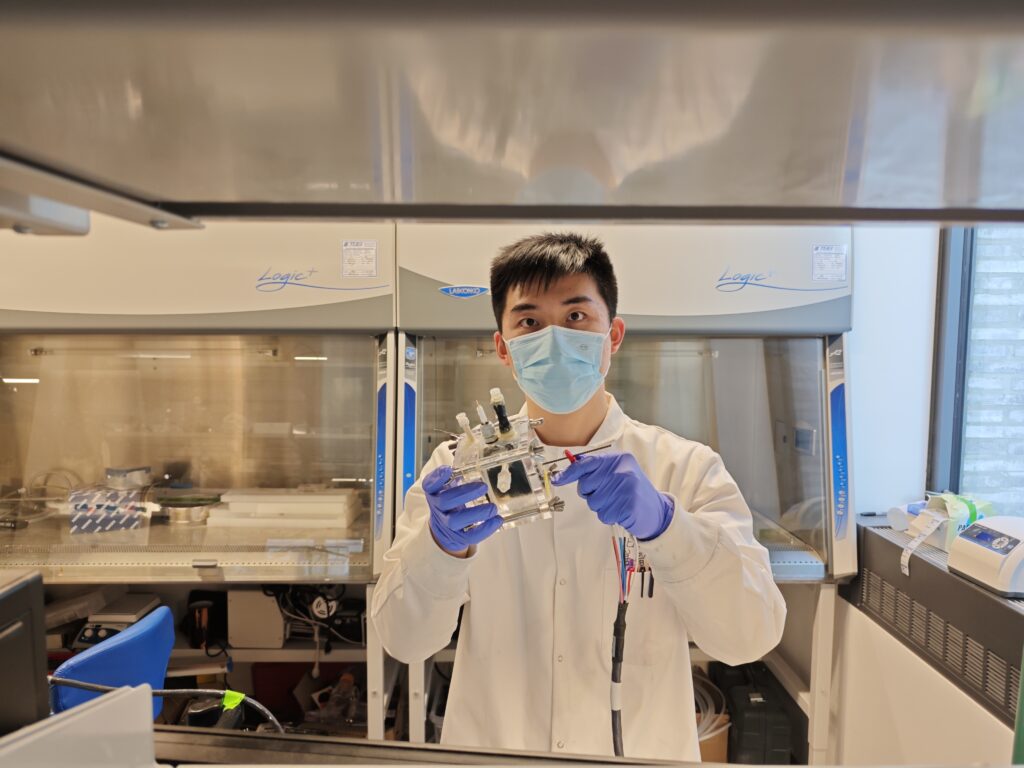
A Tools of the Trade Contribution to Nature Reviews Clean Technology, a new journal launched in 2025.
I am today years old when I learned you can actually put Chinese characters as your name in the online version of the paper 😮
Water Resource Recovery Facilities Empower the Electrolytic Hydrogen Economy
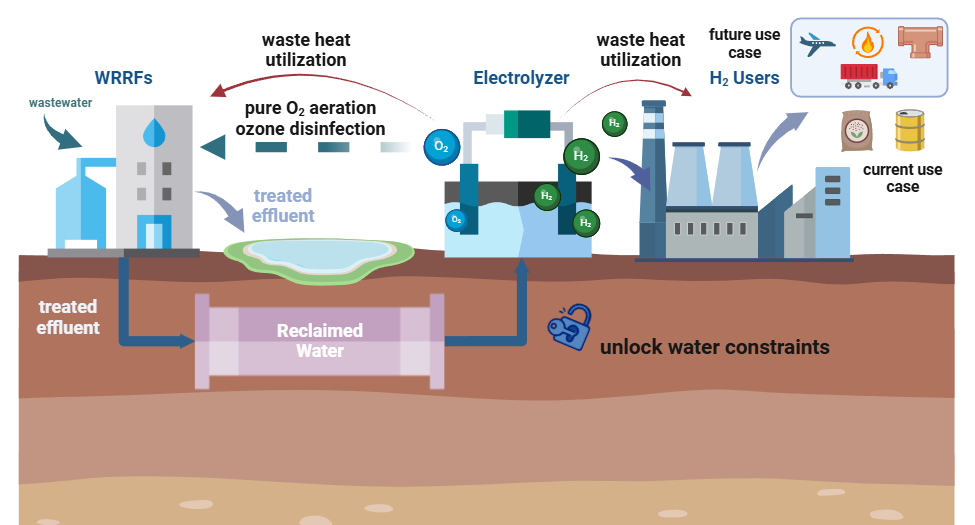
Hydrogen – one of the simplest molecules yet tasked with a big role in decarbonization. However, most H2 produced today are “dirty” produced from fossil fuel sources. To quickly ramp up the clean H2 capacity, water electrolysis with renewables (the so-called “green H2“) is definitely a big player.
Our paper 📜 looks into one important aspect of the H2 economy – water. With an optimization framework developed and applied to real-world data of WRRFs and H2 users, we argue that reusing treated WRRF effluent (reclaimed water) for green H2 production is viable both availability-wise and economic-wise, and could unlock the water constraints especially for water-stressed regions. This is a prime example that WRRFs’ role in net-zero is definitely beyond decarbonization within WRRFs themselves, but also to catalyze the cross-sector decarbonization efforts!
We synthesize the study into one easy-to-follow storymap, check it out.
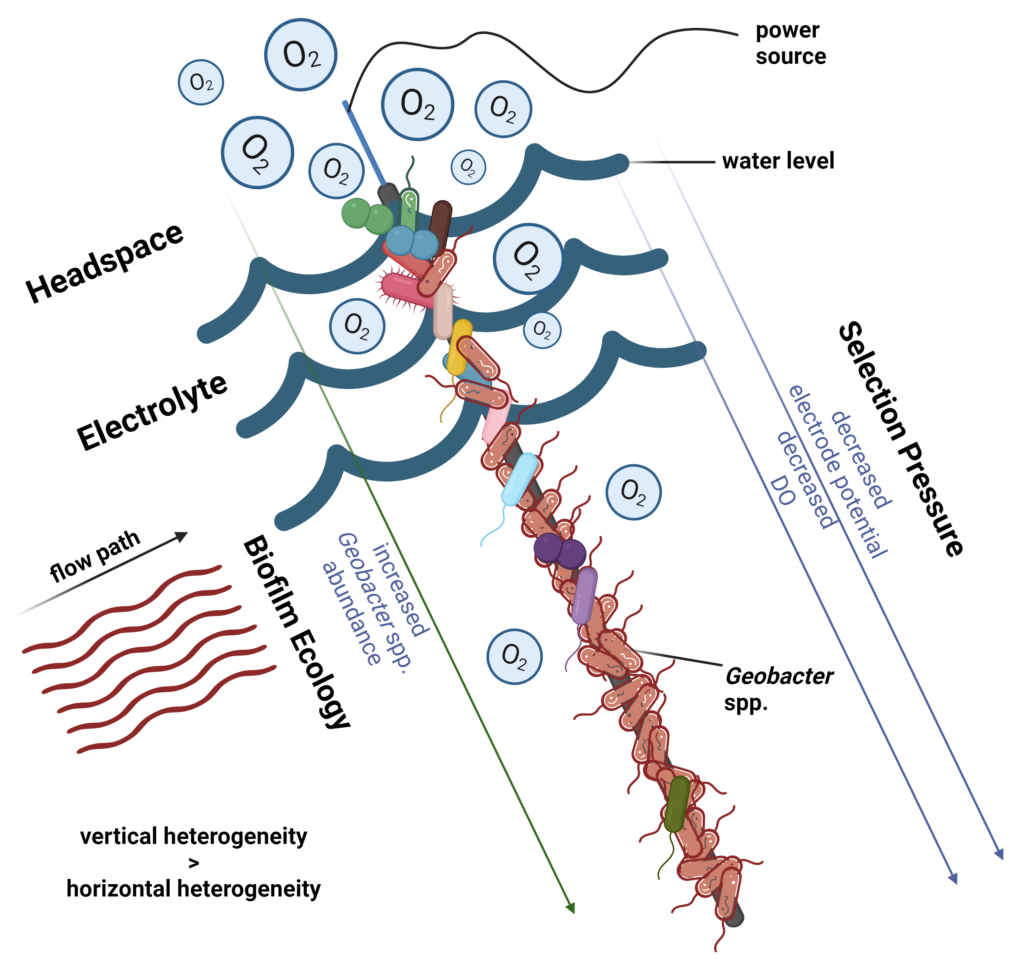
During the winter of 2023, I spent a quite memorable one-and-a-half month in UIUC, where we operated pilot microbial electrolysis cells (MEC) alongside a pilot hydrothermal liquefaction (HTL) system (on a trailer!) for a demonstration on a closed-loop wet waste to jet fuel system🚀. This project involves quite a lot of heavy lifting (each reactor is ~150 kg), driving (we drove the reactors all the way from Princeton to Urbana-Champaign 🚚) and troubleshooting XD.
In this study, we demonstrated the possibility of sustainable aviation fuel (SAF) with eliminated reliance on external hydrogen sources, but the essence extends to many other area – the key is to find a niche application that generates high-strength wastewater and needs H2.
My personal favorite section, is still of course the bugs 🦠 This study is full of their tales🧫 Take a read!
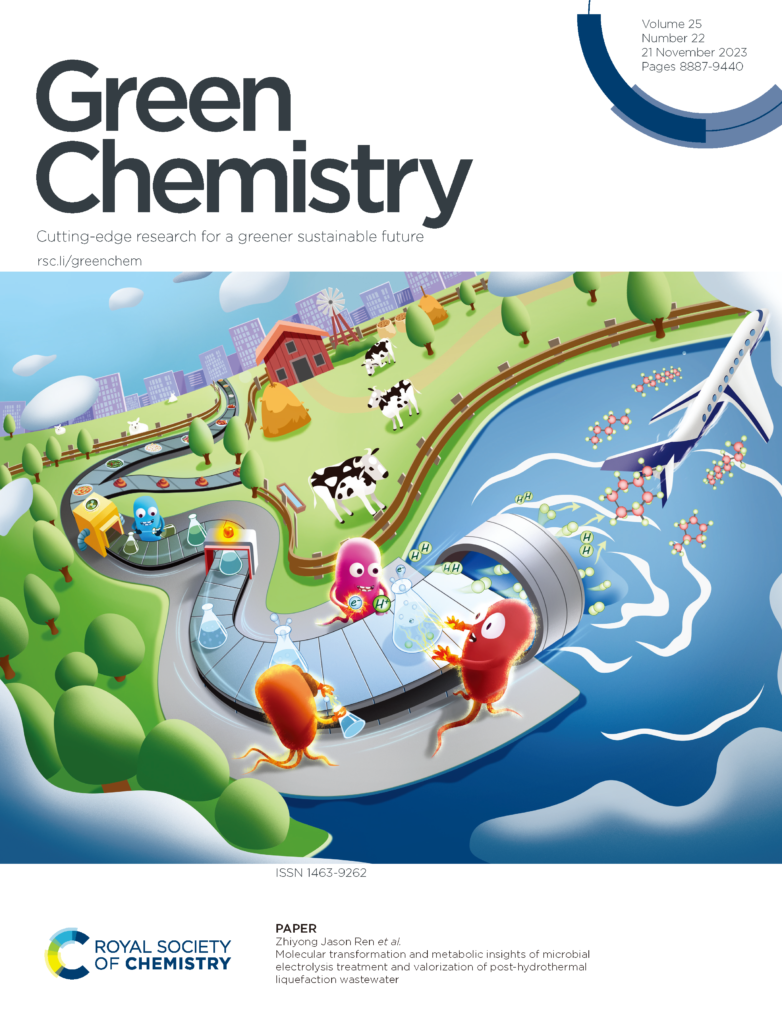
Featured as front cover and 2023 Green Chemistry HOT Article.
We environmental engineers love Chemical Oxygen Demand (COD), but COD often fails to tell the full story. Targeted analysis such as HPLC can provide more granular chemical information, but relies on a priori knowledge on the wastewater’s composition and often fails to reflect the complexity of real wastewater. What exactly happens in the MEC anode where the electrified bugs eat and thrive? Past literature has shed rather limited information on that. In this paper, we explored how 2D NMR can be used for an intuitive visualiozation of microbes’ “dining table”.
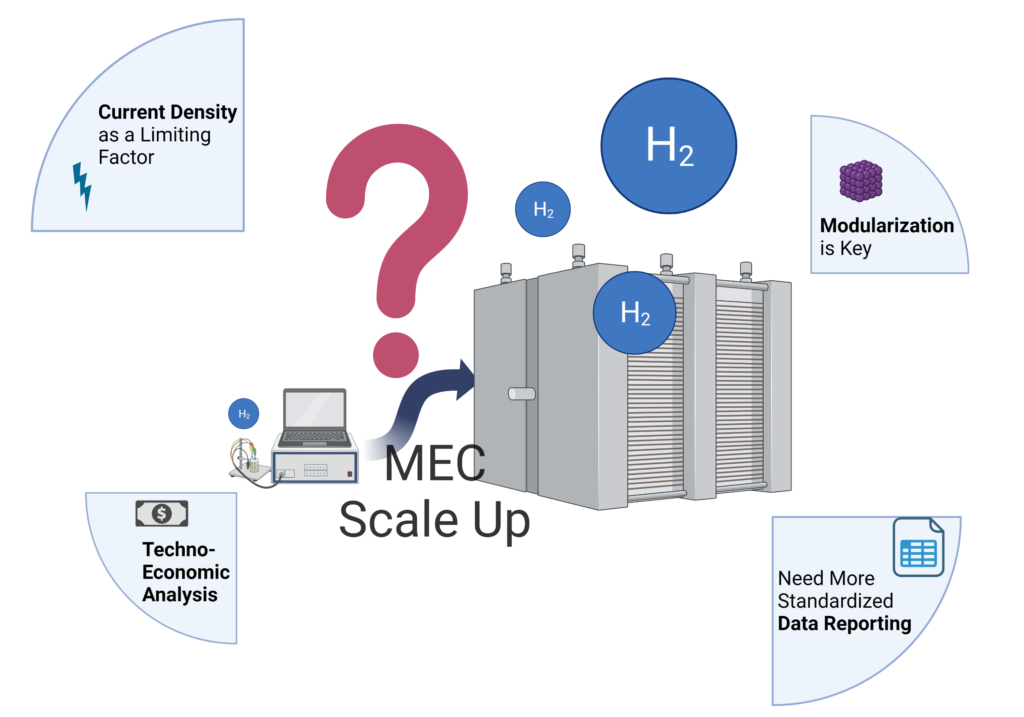
Microbial electrolysis cells (MECs) convert waste to energy, usually with H2 as the energy carrier. In this analytical review, we systematically summarized the scale-up approach so far and compared their performance. What we found interesting is that the metrics related to H2 evolution suffer heavily from scale-up, but not so much for COD removal. The relatively-low current density is still a major hurdle to its full-scale application, but we’ve seen promising improvements by utilizing high-strength wastewater with high conductivity, usually with halotolerant bioanodes. We conducted a TEA that looks into the profitability of MEC for H2 production under different market scenarios, and identified the sweet spot for MEC-H2. Also, we have compiled two tables to encourage a more standardized data reporting, one for technical comparison, and one for TEA (hopefully it makes future researchers’ literature review experience a bit more pleasant 😉)
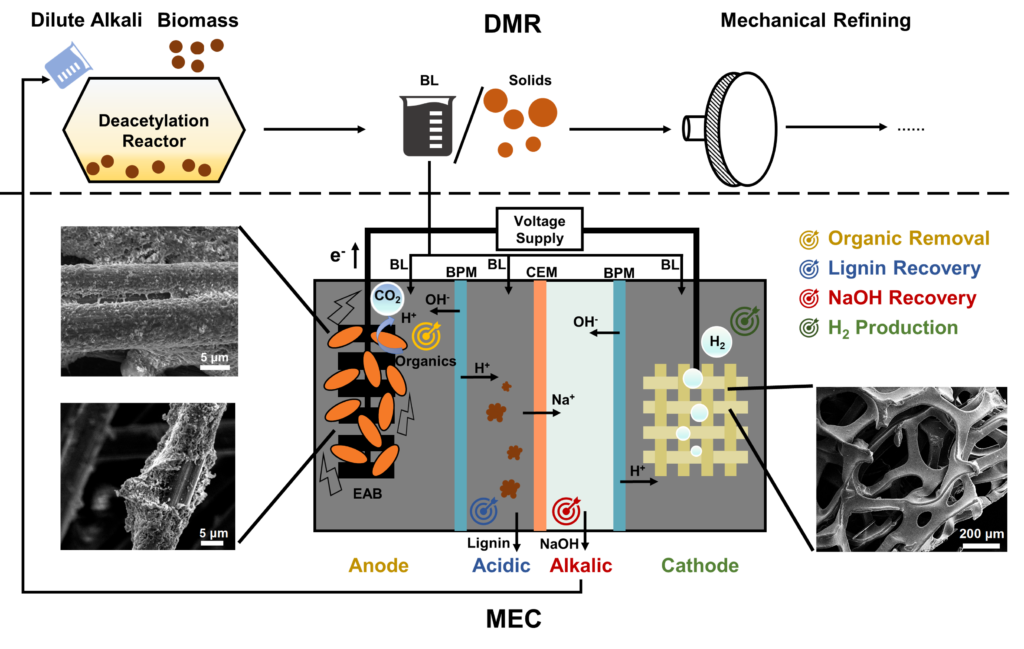
Black liquor is a complex waste stream generated from the fast-expanding biorefinery industry, and the high management cost has been known as a major development barrier. In this work, we demonstrated a rationally designed 4-chamber microbial electrolysis process that was capable of recovering the value-added lignin, NaOH, and H2 products while removing waste organics from the Deacetylation and Mechanical Refining (DMR) black liquor, which could potentially reduce the disposal cost by up to 40%. This work provided a good example on how complex liquid waste stream can be valorized via multi-functional microbial electrochemical technology, and how the traditionally unfavored pH gradient in an electrochemical reactor can be manipulated for lignin precipitation and alkaline recovery at the same time.
